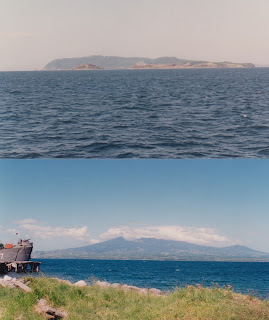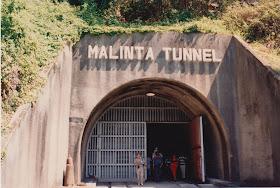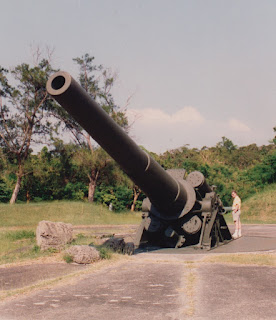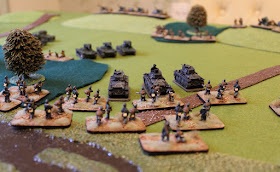Pages
Monday, 25 January 2016
Pancho Villa and the Mexican Revolution
Osprey do the attack on Columbus and the consequences in their Raid series.
This title gives you a brief background to the raid, the action itself and the details of Pershing's expedition. Villa was a hero and military genius to some and a common criminal to others. The author's view is that he was somewhere between the two.
This action led me on to a more detailed look at the Mexican Revolution. Again Osprey provides the basics with their Elite series ' The Mexican Revolution 1910-20'.
The Mexican Revolution began as a movement of middle-class protest against the long-standing dictatorship of Porfirio Diaz (1876-1911). The first uprising was led by Francisco Madero who was elected President in October 1911. After that there is a complex series of rebellions and coups. There is a good summary by Alan Knoght at History Today.
Villa became a serious player in the conflict because his Division of the North was an effective military unit, at times closer to an army than a division. In 1914, allied with another faction, the Zapatista, he captured Mexico City. However, in the end the Constitutionalists, led by Alvaro Obregon, triumphed using modern tactics and equipment. Villa insisted on frontal cavalry charges against entrenched opposition, who by 1915 had learned the lessons of the Western Front. The raid on the USA was something of an afterthought, probably aimed at securing weapons and supplies. Villa accepted an honourable retirement in 1920, but was assassinated on Obregon's orders in July 1923.
The attractions of the period are colourful characters like Villa and Zapata and exotic troop types. Think westerns with machine guns, artillery, a few armoured vehicles and aircraft. My favourite is the tactic of loading a train with dynamite and percussion caps and sending it unmanned in a town to cause chaos before the attack. Railroads were absolutely key to the conflict.
For the US forces, Osprey also do 'The US Army 1890-1920' in the MAA series.
This does appeal to me - just a decision as to scale. Bolt Action in 28mm was my first thought, but perhaps a few more figures in 15mm.
Must finish those Napoleonics first though. Inspired by a very good weekend of gaming at our club's Open Day. We refought the Battle of Fuentes de Onoro in 28mm using Black Powder. Another option for the Mexican Revolution - Viva Villa!
Saturday, 16 January 2016
Viking Storm
A new author for me is Julian Brazier who has written a new take on the Alfred the Great story in his novel Viking Storm. The story broadly follows the historical record, such that it is, with Viking armies conquering Northumbria, Mercia and East Anglia. Next is Wessex and the young king Alfred is betrayed by his own nobles then driven to the remote marshes in Somerset to regroup. He organises a comeback rallying the Fyrd and defeating the Vikings led by Guthrum. The cakes get burnt and all the usual elements are touched on.
The story broadly follows the historical record, such that it is, with Viking armies conquering Northumbria, Mercia and East Anglia. Next is Wessex and the young king Alfred is betrayed by his own nobles then driven to the remote marshes in Somerset to regroup. He organises a comeback rallying the Fyrd and defeating the Vikings led by Guthrum. The cakes get burnt and all the usual elements are touched on.
The twist in this version is that Alfred finds unlikely allies in Constantinos, a Byzantine soldier and diplomat and his bodyguards who all find their own reasons to fight. These are professional cavalry in a war fought mostly by foot militia and they add a new dimension to the Saxon forces.
It's not easy to find a new take on such a well known story and the author does it well. The story rattles on at a good pace, with plenty of action and several sub plots. A good read.
Sunday, 10 January 2016
GoT - Lannister Pikemen
I have started to use my Game of Thrones armies for Lion Rampant as well as SAGA. This requires some additional troops for the standard 24pt army.
A box of Perry Miniatures, European Infantry 1450-1500 provides some 40 figures in a huge variety of combinations at outstanding value for money. The big downside of this variety is assembly, but Perry's are not bad and it didn't take that long.
The first unit up assembled and painted is a unit of pikemen. I settled for a simple one stage painting followed by army painter dip. This is quick and easy and produces a decent result.
You can pad out a Game of Thrones army with almost any medieval figure, either as feudal troops or sell swords. I did that at the club today. Tywin Lannister and his unit of knights performed miserably in both games, but the new pikemen held their own. Some crossbowmen next I think.
Saturday, 9 January 2016
Battle of Bataan 1942
Monday, 4 January 2016
One ridge, two bridges
Another fill in job completed on the early war Germans in 15mm with some more rifle teams. I was thinking about a Seelowe Nord scenario, when it occurred to me that my Nomonham 1939 Russians would also work for a Barbarossa scenario.
This month's Miniature Wargames offered a suitable scenario, based on an 1809 battle. The essence of the scenario is a ridge at one end of the table as an objective. However, half way across the table is a river with two crossing points. So the Russians have to decide how much of their force to commit at the river crossings and the Germans where to direct the Schwerpunkt. The game was played in 15mm using Flames of War rules.
The Russians decided on a forward Defence with an armoured reserve behind the wood and artillery on the ridge. The Germans dummied to the left crossing but put in the main effort on the right.
The Germans force their way across the river but lost a lot of armour. Must remember how light early war German tanks are!
Would never have got there without priority air support from the Stukas.
This is a good scenario for a range of periods. The Miniature Wargames article includes ancient, horse and musket as well as WW2. A good end to my holiday gaming - back to work tomorrow!
Friday, 1 January 2016
Looking forward (and back) in 2016
P.S. On a positive note my football team, Fulham, has a new manager from the Balkans. By some coincidence Slavisa Jokanovic was born in Novi Sad, which is the city next to Petrovaradin. I hope that is a good omen for what's left of the season!






















